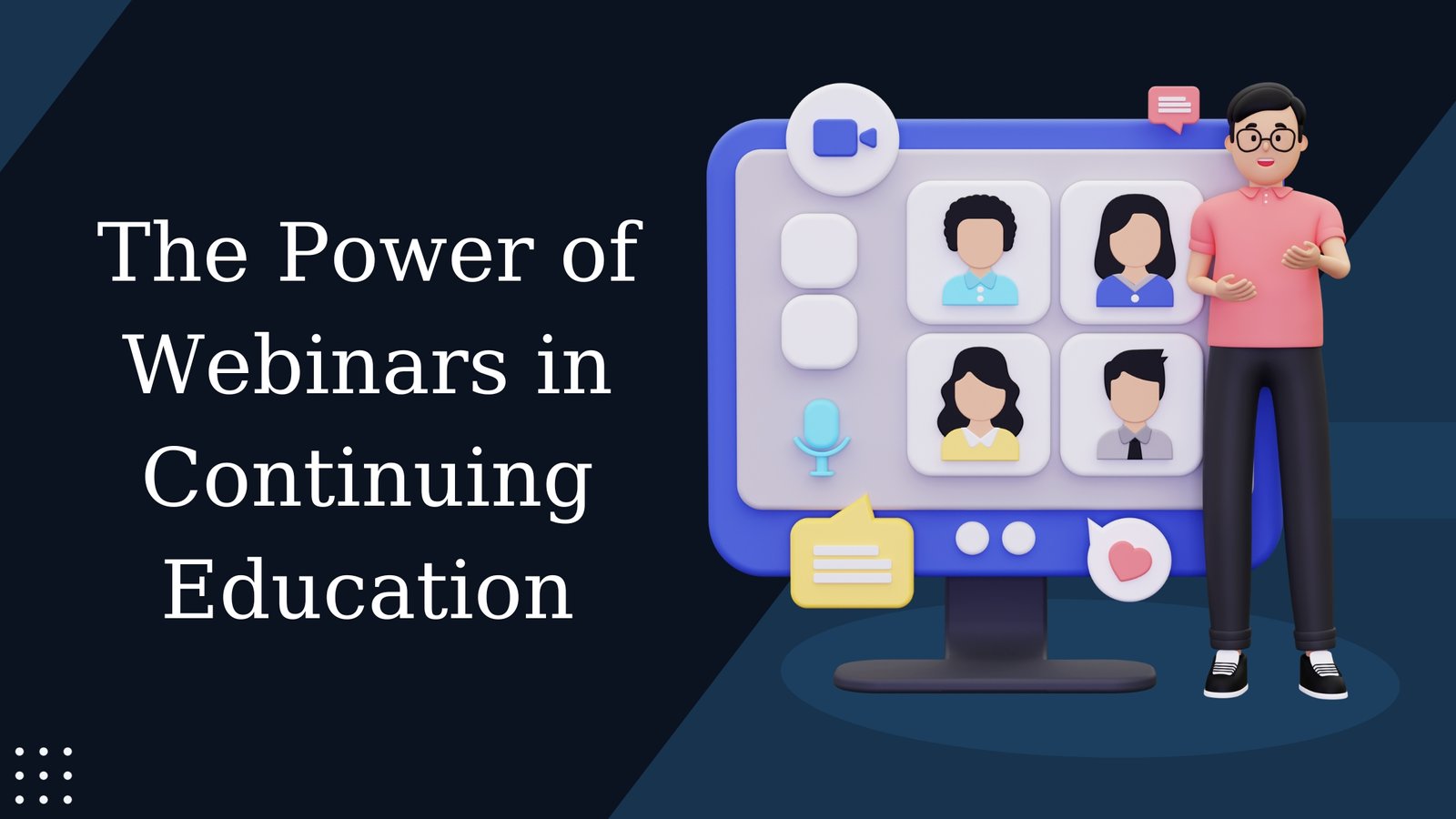Continuing education is essential for professionals in various fields to stay updated with the latest developments, trends, and best practices in their respective industries. One effective and flexible tool for continuing education is the webinar. Webinars offer a convenient way for individuals to enhance their skills, knowledge, and expertise from the comfort of their homes or offices. In this article, we will explore how to use webinars for continuing education, identify the target audience, discuss the effectiveness of webinars, and provide a formula for incorporating webinars into a successful continuing education strategy.
Contents
- How To Use Webinars for Continuing Education:
- Identify Relevant Topics:
- Who Should Attend These Seminars for Continuing Education:
- Reasons Why Continuing Education Through Webinars Is Effective:
- The Best Formula for Using Webinars to Enhance Continuing Education Opportunities:
- Incorporate Webinars to Enhance Your Continuing Education Strategy:
- Conclusion:
How To Use Webinars for Continuing Education:
Webinars, or web-based seminars, are interactive online events that facilitate real-time communication between a presenter and an audience. To leverage webinars for continuing education, follow these steps:
Identify Relevant Topics:
Choose topics that are current, relevant, and aligned with the participants’ professional goals.
Consider emerging trends, new technologies, or industry-specific updates.
Engage Knowledgeable Presenters:
Invite subject matter experts or experienced professionals to lead the webinars.
Ensure presenters have the ability to effectively communicate complex concepts in an online format.
Interactive Learning Activities:
Incorporate polls, quizzes, and Q&A sessions to keep participants engaged.
Encourage discussion and collaboration through virtual breakout sessions.
Record webinars for participants who may not be able to attend live.
Make recordings accessible for future reference, creating a valuable resource library.
Who Should Attend These Seminars for Continuing Education:
Benefits of live seminars for continuing education include real-time engagement, immediate Q&A, in-person networking, and an immersive learning environment. While webinars offer convenience and accessibility, the interactive nature of live seminars provides a unique and dynamic experience for participants. Webinars for continuing education are beneficial for a wide range of professionals, including:
Working Professionals:
Individuals seeking to advance their career or stay current in their field.
Professionals with tight schedules who need flexible learning options.
Students and Graduates:
Students looking to supplement their academic knowledge with practical insights.
Recent graduates aiming to bridge the gap between academic learning and industry requirements.
Entrepreneurs and Small Business Owners:
Business owners are looking to enhance their skills in areas such as marketing, finance, or leadership. Entrepreneurs seeking the latest information to stay competitive in their industries.
Reasons Why Continuing Education Through Webinars Is Effective:
Convenience and Accessibility:
Participants can access webinars from anywhere with an internet connection, eliminating the need for travel. Flexible scheduling allows individuals to learn at their own pace.
Cost-Effectiveness:
Webinars often have lower costs compared to traditional in-person seminars.
Savings on travel, accommodation, and venue expenses make webinars an affordable option.
Real-Time Interaction:
Live Q&A sessions and interactive elements provide direct engagement with presenters.
Networking opportunities with peers and industry experts enhance the learning experience.
Recorded Content for Future Reference:
Participants can revisit recorded sessions for reinforcement and review. A library of recorded webinars serves as a valuable knowledge repository.
The Best Formula for Using Webinars to Enhance Continuing Education Opportunities:
Clear Objectives:
Define specific learning objectives for each webinar to ensure participants gain tangible skills and knowledge.
Engaging Content Delivery:
Use multimedia elements, real-world examples, and case studies to make the content more engaging. Break down complex topics into digestible segments for better comprehension.
Interactive Elements:
Incorporate polls, quizzes, and group discussions to encourage active participation.
Foster a collaborative learning environment through virtual breakout sessions.
Feedback Mechanism:
Collect participant feedback to assess the effectiveness of the webinar.
Use feedback to improve future sessions and tailor content to participants’ needs.
Incorporate Webinars to Enhance Your Continuing Education Strategy:
Integrate Webinars into Existing Programs:
Embed webinars into traditional classroom settings or existing online learning platforms.
Offer webinars as supplementary resources for in-depth exploration of specific topics.
Promote Through Multiple Channels:
Utilize email newsletters, social media, and professional networks to promote upcoming webinars. Collaborate with industry associations and organizations to extend reach.
Certificates and Accreditation:
Provide certificates of completion for participants, adding value to their professional profiles.
Seek accreditation from relevant institutions to enhance the credibility of the webinars.
Continuous Improvement:
Regularly evaluate the effectiveness of webinars through participant feedback and performance metrics. Adapt and refine webinar content based on evolving industry trends and participant needs.
Conclusion:
Webinars offer a dynamic and accessible platform for professionals to engage in continuing education. By carefully selecting topics, engaging knowledgeable presenters, and incorporating interactive elements, organizations, and individuals can harness the power of webinars to enhance learning opportunities. Whether you are a working professional, student, or entrepreneur, integrating webinars into your continuing education strategy, such as physical therapy continuing education,can provide a flexible, cost-effective, and impactful way to stay ahead in your field.










